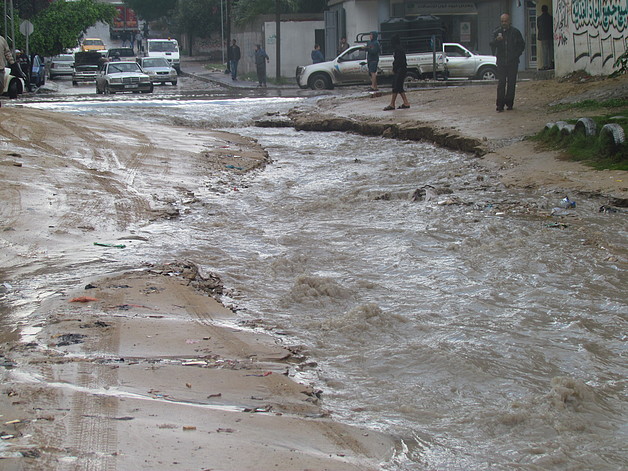Winter rains caused flooding across Gaza
Gaza remains ill-prepared for large-scale weather events
Heavy rains at the end of November (24-27 November) caused localized flooding in multiple areas across the Gaza Strip. These include the Sheikh Radwan, Nafaq, Manara and Saftawi areas in Gaza City; the Al-Amal area and a section of Salah ad-Din road in Khan Younes; the Abu Rashid area in Jabaliya; and the Mashrou’ area in Beit Lahiya.
While no injuries were reported, a number of people were temporarily displaced from their homes, including some 350 people, who went to UNRWA collective shelters. Most of these families left the collective shelters soon after the rains ended. Two government schools in Gaza City and in northern Gaza also opened and temporarily hosted a small number of people. These families received some material assistance from humanitarian actors, including the Palestinian Red Crescent (PRCS) and UNRWA. Hundreds of people in the area in and around the Sheikh Radwan storm water lagoon in Gaza City evacuated their homes and relocated, mostly to the upper floors of buildings in the area. Classes were suspended in northern Gaza and Gaza City in the afternoon of 27 November, but resumed on 30 November.

Despite limited means and reduced response capacity, all actors engaged in activities of preparedness prior to the anticipated winter weather. The PRCS distributed information leaflets on flood preparedness as an awareness raising measure to ensure that people evacuated in a timely manner. Under the coordination of OCHA, UNRWA delivered some 60,000 litres of emergency fuel to various service providers in the WASH and health sectors and to municipalities. Humanitarian agencies have prepositioned NFIs, and mobile pumps and heavy equipment were deployed to remove rubble and clear drains in vulnerable areas.
Palestinian Civil Defence (PCD) teams assisted in pumping away flood and sewage water, while municipal services assisted in drainage clearing, rubble removal and the establishment of an artificial lagoon to divert overflow water in Gaza City. In response to the last storm, the Coastal Municipalities Water Utility (CMWU), with support from the ICRC and in cooperation with Gaza Municipality, installed a temporary pipeline to expand the evacuation capacity of the main storm water retention lagoon of Gaza City in Sheikh Radwan. The entry of materials for these pipelines was expedited in three days. Five mobile pumps were procured after winter storm Alexa in December 2013, via ERF funding, when some 21,000 people were temporarily displaced. These pumps entered Gaza in August 2014 and now make a significant contribution to controlling flooding. However, at least seven additional mobile pumps are still required to cover needs across the Gaza Strip.
While the impact of the November rains remained localized, Gaza is ill-prepared for larger winter weather events due to a lack of materials and poor funding of services that puts a strain on all basic services (health, WASH, energy),while compromising the ability to carry out essential infrastructure and reconstruction upgrades.









